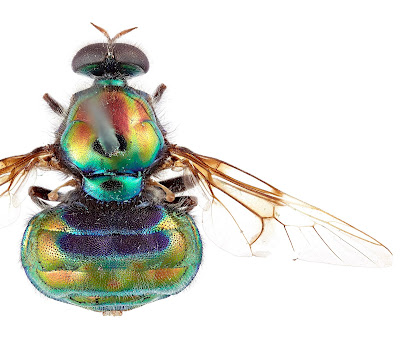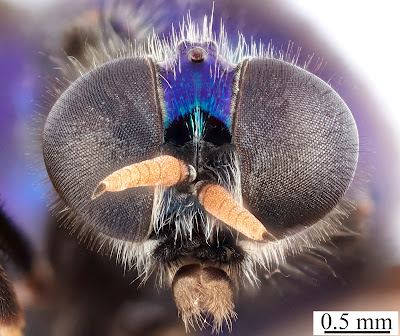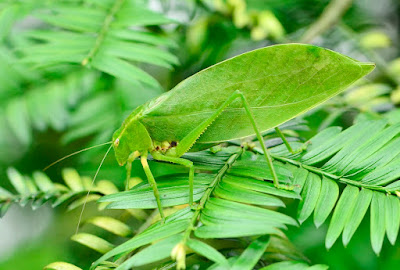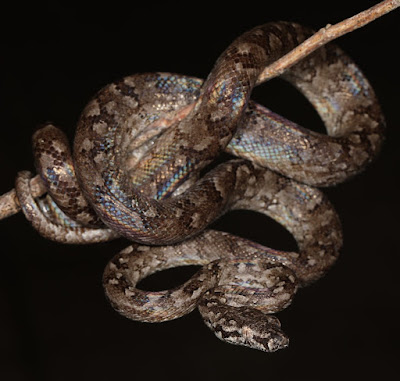[Most Recent Entries] [Calendar View]
Thursday, September 16th, 2021
| Time | Event | ||||||||||||
| 3:58a | [Entomology • 2020] Opaluma gen. nov. • A New Genus of Iridescent Soldier Flies (Diptera: Stratiomyidae) from Australia, including Seven New Species: Opaluma fabulosa, O. iridescens, O. rupaul, et al.
Abstract Many eye-catching and undescribed species of Australian soldier flies have been collected but left undiagnosed in entomological collections. We describe Opaluma Lessard & Woodley gen. nov., a new genus of iridescent soldier fly endemic to Australia from the subfamily Antissinae, and provide an updated key to the five Australian antissine genera. Seven new species are described and illustrated herein, along with an identification key to all known species. The new species are Opaluma ednae Lessard & Woodley, sp. nov., O. fabulosa Lessard & Woodley, sp. nov., O. iridescens Lessard & Woodley, sp. nov., O. opulens Lessard & Woodley, sp. nov., O. rupaul Lessard & Woodley, sp. nov., O. sapphira Lessard & Woodley, sp. nov. and O. unicornis Lessard & Woodley, sp. nov. All but one are known from locations directly impacted by the recent 2019/2020 spring and summer Australian bushfires. Now that the new species are formally named and described, they may be included in future bushfire recovery monitoring programs. Eight genera of Antissinae are now recognised in the world. Key words: biodiversity, classification, species description, Stratiomyidae, systematics, taxonomy. Genus Opaluma Lessard & Woodley, gen. nov. Type species: Opaluma sapphira Lessard & Woodley, gen. et sp. nov. Etymology: This specific name is derived from the Latin opalus, opal, referring to the colourful opal-like appearance, and luma, thorn, referring to the prominent medial hook-like process on abdominal sternite 2. Opaluma sapphira Lessard & Woodley, sp. nov. Etymology: This specific name is derived from the Latin, sapphirinus, sapphire-blue, referring to its brilliant coloration. Opaluma fabulosa Lessard & Woodley, sp. nov. Etymology: This specific name is derived from the Latin, fabulosus, fancy, referring to the its brilliant colouration. Opaluma ednae Lessard & Woodley, sp. nov. Etymology: This specific name is in honour of the comical character Dame Edna Everage whose signature hair has a striking resemblance to the colouration of this species. Opaluma unicornis Lessard & Woodley, sp. nov. Etymology: This specific name is derived from the Latin, uni, one, and cornu, horn, referring to the pointed posteromedial process on abdominal sternite 5.
Opaluma opulens Lessard & Woodley, sp. nov. Etymology: This specific name is derived from the Latin, opulens, opulence, referring to the beautiful colouration and robust stature of the species.
Opaluma rupaul Lessard & Woodley, sp. nov. Etymology: This specific name is in honour of the drag superstar RuPaul Charles who is known to wear extravagant outfits that resemble this species. Opaluma iridescens Lessard & Woodley, sp. nov. Etymology: This specific name is derived from the Latin, iris, iridescent, referring to spectacular rainbow-like colouration of the species. Bryan D. Lessard, David K. Yeates and Norman E. Woodley. 2020. Opaluma Lessard & Woodley, gen. nov: A New Genus of Iridescent Soldier Flies (Diptera: Stratiomyidae) from Australia, including Seven New Species. Austral Entomology. 59(3); 467-486. DOI: 10.1111/aen.12485 “Two of my new flies, Opaluma opulens and Antissella puprasina, have now been recognised as endangered species. They are known only from Lamington National Park in Queensland, which was severely burned in the bushfires.” 150 new species have been named in the past year by Australia’s national science agency, CSIRO, and its partners. They include tributes to RuPaul and Pokemon to help Australians understand, protect and benefit from our nation’s biodiversity. | ||||||||||||
| 4:22a | [Entomology • 2021] Paraxantia hakka • A New Species of Paraxantia Liu & Kang (Orthoptera: Tettigoniidae: Phaneropterinae: Vosiini) from China Abstract The genus Paraxantia Liu & Kang, 2009 previously included 10 species, which are endemic to south of China. Herein we describe one new species: P. hakka sp. nov. from Guangdong Province, China. Illustrations of male stridulatory files of most Paraxantia species are provided. The distribution of the new species is discussed and mapped. All types are deposited in Insect Collection of Institute of Zoology, Chinese Academy of Sciences, Beijing, China (IZCAS). Keywords: Orthoptera, Phaneropterinae, taxonomy, Nan'Ling Mt., Oriental region
Paraxantia hakka Wu & Liu sp. nov. Etymology. The new species was named after Hakka, a sub-nation of the Han nationality, representing the aboriginal culture of the Nan’Ling area. Chao Wu and Chun-Xiang Liu. 2021. A New Species of Paraxantia Liu & Kang (Orthoptera: Tettigoniidae; Phaneropterinae; Vosiini) from China. Zootaxa. 5026(3); 440-446. DOI: 10.11646/zootaxa.5026.3.5 | ||||||||||||
| 3:51p | [Herpetology • 2021] Chilabothrus ampelophis • A Small New Arboreal Species of west Indian Boa (Serpentes: Boidae) from southern Hispaniola
Abstract Thirteen species of West Indian boas (Chilabothrus) are distributed across the islands of the Greater Antilles and Lucayan Archipelago. Hispaniola is unique among this group of islands in having more than two species of Chilabothrus—three are currently recognized. Here we describe a fourth species from Hispaniola, a newly discovered distinctive species of small boa from the dry forest of the Barahona Peninsula, southwestern Dominican Republic, near the border with Haiti. This new species resembles in body size and in other aspects its closest relative Chilabothrus fordii (Günther 1861), with which it appears to be allopatric. The new species, which we describe as Chilabothrus ampelophis sp. nov., differs from C. fordii in body, head, and snout shape; in scalation; in both coloration and color pattern; and in phylogenetic uniqueness. Some relevant meristic characters from C. ampelophis sp. nov. fall between C. fordii and C. gracilis (Fischer, 1888), accentuating the morphological and likely ecological differences from its sister species C. fordii. The discovery of this new species is especially important as it appears to be among the smallest boid (Boidae) species, has an arboreal specialization, and is found in a very restricted and highly threatened habitat.
Chilabothrus ampelophis sp. nov. Hispaniolan Vineboa Etymology. The epithet is from ancient greek ampelos, meaning vine, in allusion to the slender body and head shape, which is rather unusual for the genus, and for the relative abundance of vines in the dry rocky habitat at the type locality. The suffix -ophis refers to a snake, hence the epithet is translated as ‘‘vinesnake.’’ Miguel A. Landestoy T., R. Graham Reynolds and Robert W. Henderson. 2021. A Small New Arboreal Species of west Indian Boa (Boidae; Chilabothrus) from southern Hispaniola. Breviora. 571(1):1-20. DOI: 10.3099/MCZ67.1 |
| << Previous Day |
2021/09/16 [Calendar] |
Next Day >> |






















